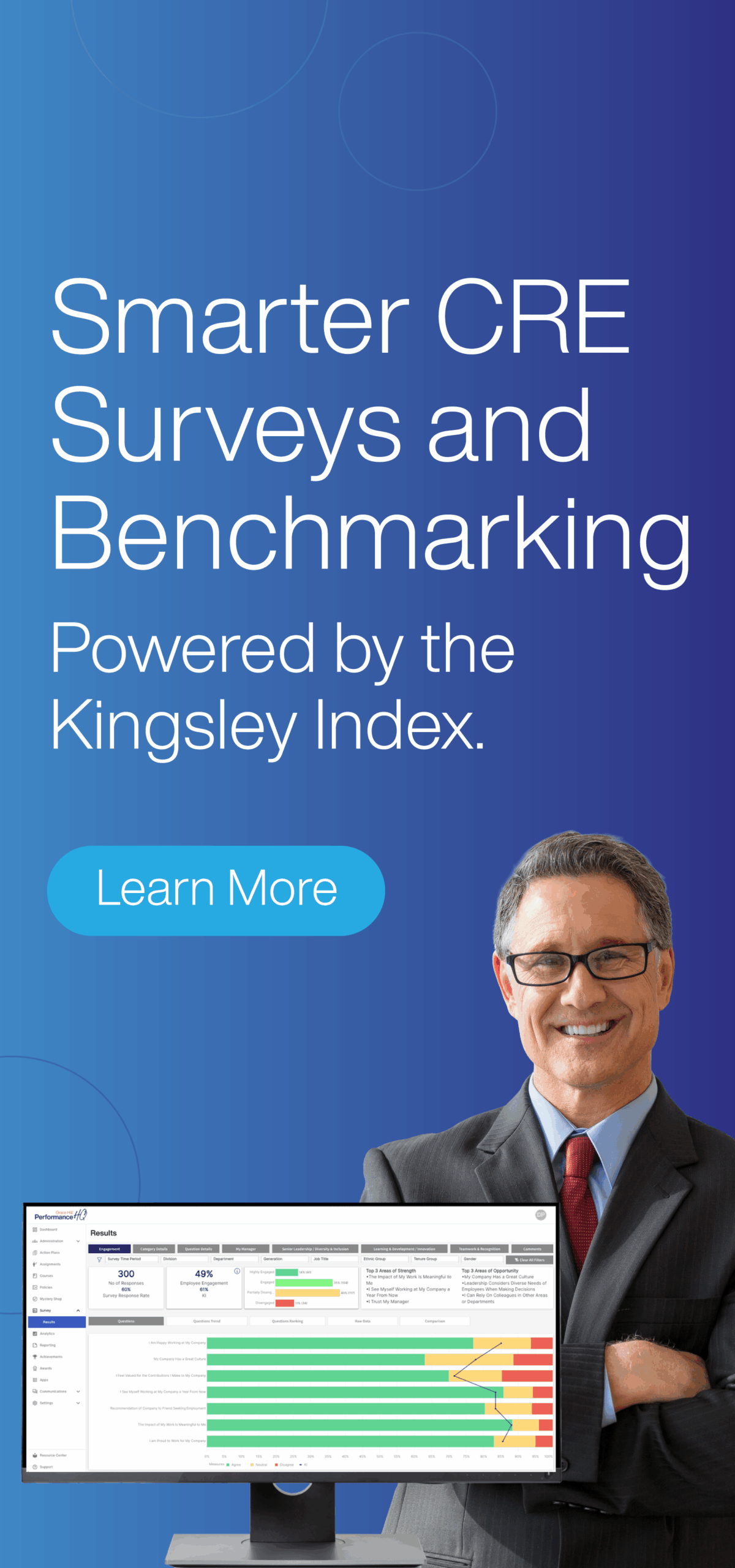Are your KPIs delivering the accurate and actionable insights you need to improve business performance?
Key performance indicators (KPIs) play a critical role in a CRE leader’s ability to track and measure performance. And because of that, information abounds as to what you should measure and why. But if you’re not careful, your KPIs might not be moving you in the direction you intend. And as baseball legend Yogi Berra once famously said, “If you don’t know where you are going, you’ll end up someplace else.”
There is no “one size fits all” approach for measuring what truly matters. Without strategic application, KPIs can quickly become a collection of meaningless data points. To ensure you are capturing useful insight and tracking the right data, here are five common KPI pitfalls CRE leaders should be aware of and avoid.
The Fateful 5: Avoid These Mistakes With Your KPI Tracking
- Not Measuring The Right Things
- Having Too Many KPIs
- Not Digging Into The Details
- Not Regularly Tracking Or Sharing Performance Data With Stakeholders
- Inconsistent Measurement Practices
1. Not Measuring The Right Things
Regardless of organization type or market sector, no two businesses are the same.
And while there are standard industry benchmarks CRE leaders must incorporate, each organization has unique business drivers. It’s a nuanced approach to ensure you are measuring the right things.
With the correct KPIs in place, you can accurately gauge your success. Unfortunately, it’s easy to get off track, measuring things that might be relevant to others but not mission-critical to your specific business needs.
Time is precious. And as a leader, you don’t want to waste valuable time analyzing numbers that aren’t moving you closer to your strategic goals.
Your KPIs should be:
- Tied to your strategic goals.
- Relevant and well-defined.
- Backed by metrics.
2. Having Too Many KPIs
John Doerr, author of “Measure What Matters,” said, “We must realize—and act on the realization—that if we try to focus on everything, we focus on nothing.”
If you have too many KPIs, you risk creating noise in your evaluative processes. Just because something can be measured doesn’t mean it needs to be measured.
It’s easy to fall into the trap of a “But everyone measures this” mindset, but what might be a pertinent data point for your competitor might have less relevance for your business. To avoid this mistake, set your KPIs after you have determined your business goals and targets.
Remember, KPIs should measure only the most essential indicators of your performance. While there is no magic number for the KPIs a business should track, a good rule of thumb is to select between two to four per goal.
Having too many becomes a cumbersome task to respond to and manage. Keep in mind “key” is the operative word here.
3. Not Digging Into The Details
It’s important to understand what drives your data, but a common KPI pitfall is failing to dig into the details behind the results. Competitor analysis and industry benchmarks provide the perfect starting point. After all, an isolated data point has no value without a relevant benchmark to compare what excellence looks like for your organization.
But you can’t stop there. You must dive deeply into the results that drive performance, paying careful attention to tenant satisfaction.
Why does this matter? Because recent, ground-breaking research from MIT and Maastricht University links the effects of tenant satisfaction and renewal rates. Specifically, tenants who rate overall satisfaction 1 point higher show an increase in renewal rate by as much as 8.5%, which quantifies the connection between satisfaction and higher gross and effective rents.
A robust survey solution will generate valuable data that identifies gaps and equips CRE leaders with actionable insight. Overall Tenant Satisfaction and Net Promoter Score (NPS) are two high-value KPIs, but it’s equally important to look deeper into your data to uncover what drives those results.
For example, below are a few questions that help provide color to standalone scores:
- What operational elements are impacting performance?
- What is driving satisfaction (or dissatisfaction) among tenants?
- What building or management characteristics are indicators of a satisfied tenant?
Once you understand what’s driving your results, you can create procedures to operationalize the behaviors that lead to higher performance and implement corrective measures in areas of weakness.
4. Not Regularly Tracking Or Sharing Performance Data With Stakeholders
“What gets measured gets done.” Often attributed to management guru Peter Drucker, it’s an expression that’s become a familiar cliché. However, the basic tenet still holds: If you’re measuring something, you’re much more likely to act on it.
And while that’s true, it doesn’t happen by accident. It requires intentional effort and planning to track and then share KPI performance. Unfortunately, it’s a critical step that tends to get overlooked.
If you have the right KPIs (but not too many) and can drill into the key operational drivers of your performance, then make sure your stakeholders know where they stand so they can course correct quickly, where needed.
Create a plan for sharing results with stakeholders. The frequency (i.e., monthly, quarterly, etc.) and data shared likely will differ by stakeholder group, but it’s a best practice that builds trust.
Waiting until Q4 to realize you aren’t hitting your goals isn’t helpful. So if you see a dip in performance and have the data to determine the cause, don’t wait to address it. Be open and honest about your gaps (both positive and negative) to create a culture of learning and continuous improvement.
Healthy organizations view stakeholders as partners in their success, and transparency and trust are crucial elements in improved performance.
5. Inconsistent Measurement Practices
Consistency is key, particularly when it comes to how you are assessing areas of your organization and tracking KPIs. CREs of all shapes and sizes fall prey to this common pitfall, particularly those with diverse portfolios. However, it’s vital that you gather data in the same way across your organization so that performance data is consistent and not skewed based on the compilation method.
Without a consistent process to glean feedback, CRE leaders risk relying on disorganized insights that provide no valid measure of comparison. To gain a clear picture of your organization’s performance, you need a comprehensive tool for goal setting, accountability, and trend analysis.
When selecting a survey solution, it’s important to look for a customizable platform that adapts to your unique business needs and provides reporting features and industry measures that help you translate critical performance data into actionable insights. By avoiding these common mistakes, CRE leaders can ensure their KPIs are accurate and actionable, resulting in improved business performance.
It’s not an area you want to leave to chance. Meaningful KPIs are vital to your organization’s success, so make sure you are getting relevant data from the results.
Want to learn how KingsleySurveys can help you capture meaningful insight and track data that makes a difference? Talk to a Grace Hill expert today!


 Customer Support
Customer Support




